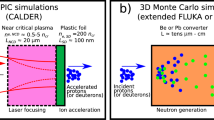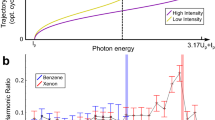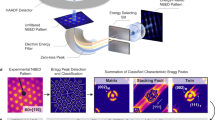Abstract
AT 0900 U.T. July 9, the American Atomic Energy Commission exploded a thermo-nuclear device of megaton yield some hundreds of kilometres in the atmosphere above Johnston Island (16.7° N., 169.4° W.). In order to observe any ionospheric phenomena which might be associated with the blast, the event was monitored at Sydney (34.05° S., 150.66° E.) by using a panoramic ionosonde previously described1, providing ionograms made by a 15-sec linear scan over a frequency-range 0.5–9.5 Mc/s at the rate of 1 every min. Fig. 1 shows an ionogram taken immediately prior to the explosion, the blast occurring immediately at the end of this particular scan. Fig. 2 shows an ionogram taken 2 min later, the first ionogram following the explosion having been lost by equipment malfunction. It is apparent that F region frequency spreading, which before the blast covered a range of 0.2 Mc/s, had extended considerably after the event and in fact on the extraordinary ray there is evidence of spreading over a range of at least 1.5 Mc/s. At 1000 h U.T., frequency spread had decreased to 0.7 Mc/s and was still evident at 1100 h U.T.
This is a preview of subscription content, access via your institution
Access options
Subscribe to this journal
Receive 51 print issues and online access
$199.00 per year
only $3.90 per issue
Buy this article
- Purchase on SpringerLink
- Instant access to full article PDF
Prices may be subject to local taxes which are calculated during checkout
Similar content being viewed by others
References
Wilson, L. D., Austral. J. App. Sci., 13, 89 (1962).
Newman Philips, J. Geophys. Res., 64, 923 (1959).
Author information
Authors and Affiliations
Rights and permissions
About this article
Cite this article
HEISLER, L., WILSON, L. Spread F Development associated with a High-Altitude Nuclear Explosion. Nature 196, 258 (1962). https://doi.org/10.1038/196258a0
Issue date:
DOI: https://doi.org/10.1038/196258a0



